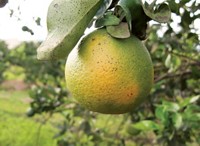Advertisement
Grab your lab coat. Let's get started
Welcome!
Welcome!
Create an account below to get 6 C&EN articles per month, receive newsletters and more - all free.
It seems this is your first time logging in online. Please enter the following information to continue.
As an ACS member you automatically get access to this site. All we need is few more details to create your reading experience.
Not you? Sign in with a different account.
Not you? Sign in with a different account.
ERROR 1
ERROR 1
ERROR 2
ERROR 2
ERROR 2
ERROR 2
ERROR 2
Password and Confirm password must match.
If you have an ACS member number, please enter it here so we can link this account to your membership. (optional)
ERROR 2
ACS values your privacy. By submitting your information, you are gaining access to C&EN and subscribing to our weekly newsletter. We use the information you provide to make your reading experience better, and we will never sell your data to third party members.
Pesticides
EPA to reconsider sulfoxaflor insecticide risks
Agency violated the law when it expanded uses of the pesticide in 2019, court rules
by Britt E. Erickson
December 22, 2022
The US Environmental Protection Agency broke the law when it allowed new uses of the insecticide sulfoxaflor in 2019, a federal appeals court ruled Dec. 21. The agency failed to assess the risks of the pesticide to endangered species, and it did not give the public a chance to comment on the decision, the US Court of Appeals for the 9th Circuit said.

The court ordered the EPA to give the public a chance to comment on the expanded uses of sulfoxaflor within 180 days.
The EPA has already started evaluating the risks of sulfoxaflor to endangered species. It released a draft assessment in July, 3 years after it allowed the new uses. That assessment found sulfoxaflor could harm nearly one third of threatened and endangered species and put 24 endangered insect species in jeopardy of extinction. The agency says it is working with Corteva Agriscience, maker of sulfoxaflor, to determine what actions are necessary to protect endangered species.
Sulfoxaflor is a less-toxic alternative to organophosphate and neonicotinoid pesticides, but environmental groups have long raised concerns about its potential to harm bees and other pollinators. The EPA removed the pesticide from the market in 2015 because of those concerns and then allowed a few uses with restrictions in 2016. The agency removed those restrictions and allowed new uses in 2019 under the administration of former president Donald J. Trump.
The Center for Food Safety and the Center for Biological Diversity, environmental groups that challenged the 2019 decision, celebrated the Dec. 21 ruling as a major legal victory.
“This decision is a huge win for monarch butterflies, rusty patched bumblebees, and all the other struggling populations of insects and birds constantly under threat from harmful insecticides,” Stephanie Parent, a senior attorney at the Center for Biological Diversity and co-counsel on the case, says in a statement. “It’s long past time for the EPA to take meaningful action to protect our most imperiled wildlife.”





Join the conversation
Contact the reporter
Submit a Letter to the Editor for publication
Engage with us on Twitter